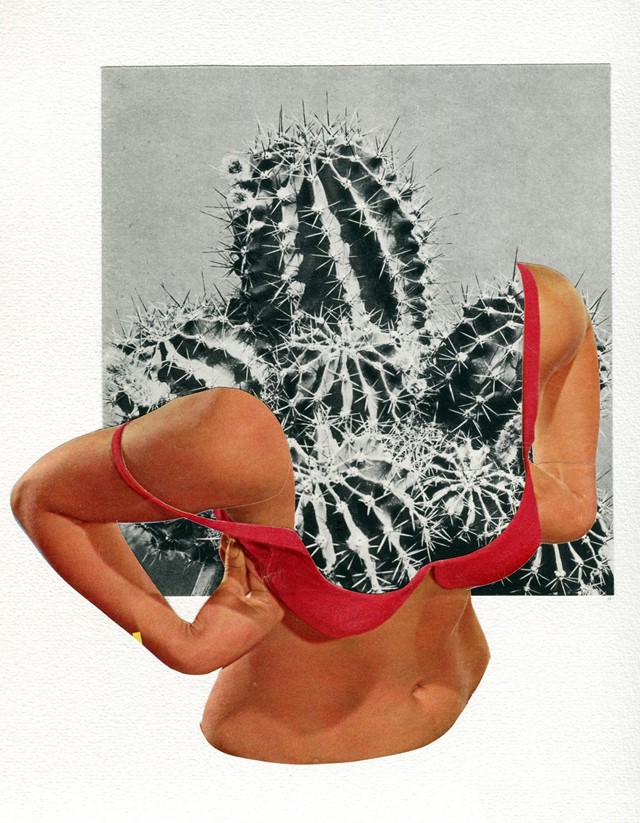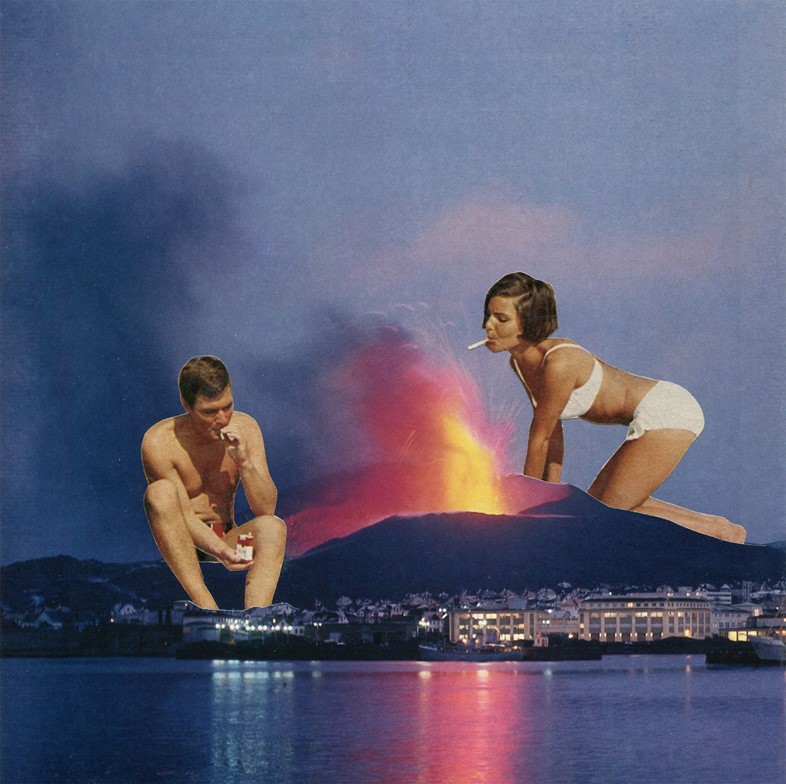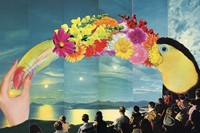Lucy Dyson’s Surrealism-inspired collages are on show now in Berlin
For Australian artist and animator Lucy Dyson, collage is a form of escapism. Having amassed a “huge collection” of secondhand books and vintage magazines from markets and stores in Berlin, where she’s based, Dyson’s approach to collage has changed over the years: where once the image was the sole draw for her, she now seeks out “the richness of colours on a page and what that evokes, and how it might sit against something else”. “Diving into the works of Jan Svankmajer or Magritte, to name two huge influences, is one of my favourite forms of escapism,” she says. “Collage easily enters the surreal through the endless combinations of seemingly random images to create new connections, just like in our dreams, and I don’t think I’ll ever tire of exploring these mysterious and often playful – sometimes witty – combinations. Tapping into the surreal is endlessly fascinating to me.”
A selection of Dyson’s collages are on show in Berlin, in an exhibition that looks at how she creates futuristic, sometimes psychedelic – she remembers the “huge appeal of cutting up childhood encyclopaedias and books to create subversive and hilarious images” – scenes using vintage imagery. The natural world is a recurring motif – birds, slugs, snakes and lizards are among the animals that make appearances – alongside human elements in the images, which might be men in suits emerging from egg shells, or a woman lighting her cigarette in the smoke of an erupting volcano. Such bizarre and surreal worlds make for compelling viewing.
Introducing less elements into a collage is something Dyson is currently enjoying. “I went through a phase of making super detailed collages,” she explains, “but now I’m attempting to pare back, and put my more detailed ideas aside for my animation projects where being obsessive is a more useful skill. For collage it’s better to be loose.” Some of her collages might only have two elements while others incorporate more characters and intricacies, but there is always a sense of a curious scene playing out that invites a closer look.

Surrealism plays a role in Dyson’s practice, and she cites myriad other collage artists whose work she admires – Hannah Höch, Peter Blake, Linder Sterling and John Stezaker, to name a few. Escapism and the surreal tie into the idea that Dyson creates alternative realities that resemble dreamscapes. “I recall my dreams quite vividly and sometimes I google their meanings,” she says. “Though I realise what I’m more interested in is the feeling a dream leaves me with and the mystery of where that feeling and the dream has come from, and I think collage evokes the same.”

Lucy Dyson: As Much to Tomorrow as to the Past. THE END is at Michael Reid Gallery, Berlin, until February 23, 2019.






